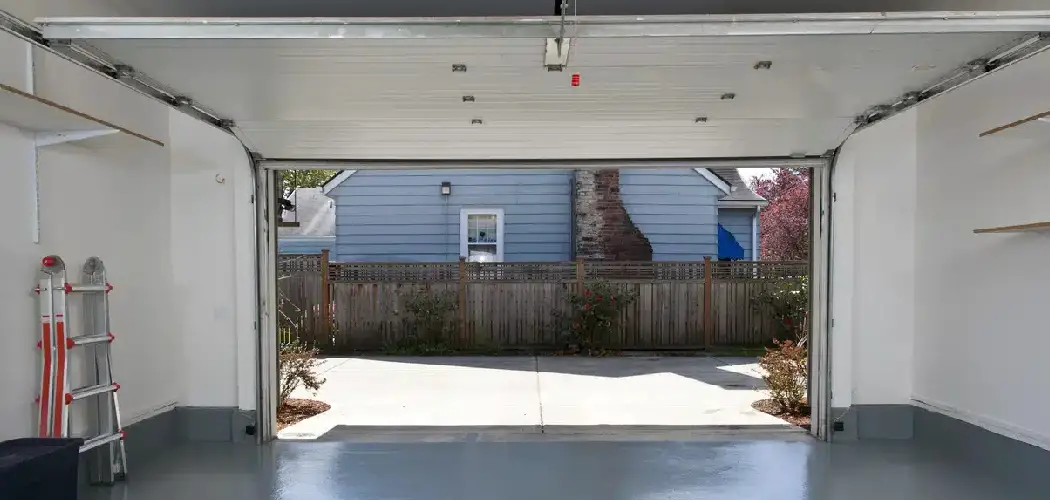Garage door seals are essential in protecting your garage from external elements, but they often come with a common problem—sticking to the floor. This issue is particularly prevalent in extreme weather conditions, such as during hot summers or freezing winters.
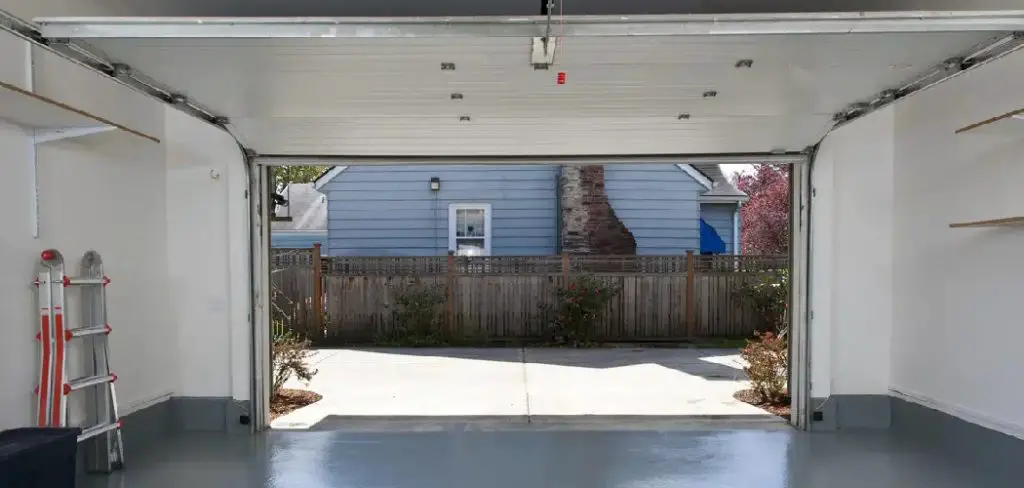
When the seal sticks, it can cause damage to the seal itself, place undue strain on the garage door motor, and even lead to misalignment of the door. Beyond mechanical issues, a sticking seal can also compromise your home’s energy efficiency by allowing drafts to enter, and it may create gaps that invite pests inside.
Understanding how to keep garage door seal from sticking is therefore essential to maintain the longevity and performance of your garage door. This article provides a step-by-step guide to tackling this issue, focusing on simple solutions like routine cleaning, proper lubrication, and installing preventive measures to ensure smooth operation year-round.
Common Causes of Garage Door Seal Sticking
Moisture Buildup
Rain, snow, or condensation can accumulate moisture around your garage door seal. When this moisture remains unchecked, it can create suction between the seal and the floor, causing the seal to stick. This is especially common in humid climates or during seasons with heavy precipitation.
Extreme Temperatures
Both heat and cold can negatively impact the performance of garage door seals. High temperatures can cause the rubber seal to soften or melt slightly, making it stick to the floor. On the other hand, extreme cold can make the seal brittle, increasing the likelihood of it adhering to the ground when the door is closed for extended periods.
Dirt and Debris
Over time, dirt, grime, and debris can accumulate along the garage door seal and the floor it touches. This buildup acts like glue, effectively bonding the seal to the surface. This problem can quickly escalate without regular cleaning, leading to operational issues with the door.
Incompatible Floor Surfaces
Certain types of floor coatings, adhesives, or surfaces can react with the seal material. This chemical reaction might cause the seal to stick more readily or leave residue that exacerbates the problem. Proper compatibility between the seal material and the floor surface is crucial to avoid this issue.
How to Keep Garage Door Seal From Sticking Cleaning the Garage Door Seal and Floor
Regular maintenance of the garage door seal and the floor is essential to prevent sticking and ensure smooth operation. Follow these simple steps to clean both surfaces effectively:
Step 1: Lift the Door Fully
Before starting, ensure the garage door is fully lifted and out of the way. This provides clear access to the seal and the floor threshold area.
Step 2: Remove Debris
Begin by sweeping and vacuuming the threshold area to remove loose dirt, dust, and grime. Eliminating debris helps prevent abrasive particles from causing unnecessary wear or interfering with the cleaning process.
Step 3: Wash Both Surfaces
Prepare a mixture of mild detergent and warm water. Use a sponge or soft cloth to gently scrub the garage door seal and the floor where the seal comes into contact. Be thorough but avoid harsh scrubbing that could damage the seal material. Rinse both surfaces thoroughly with water and allow them to dry completely before closing the door.
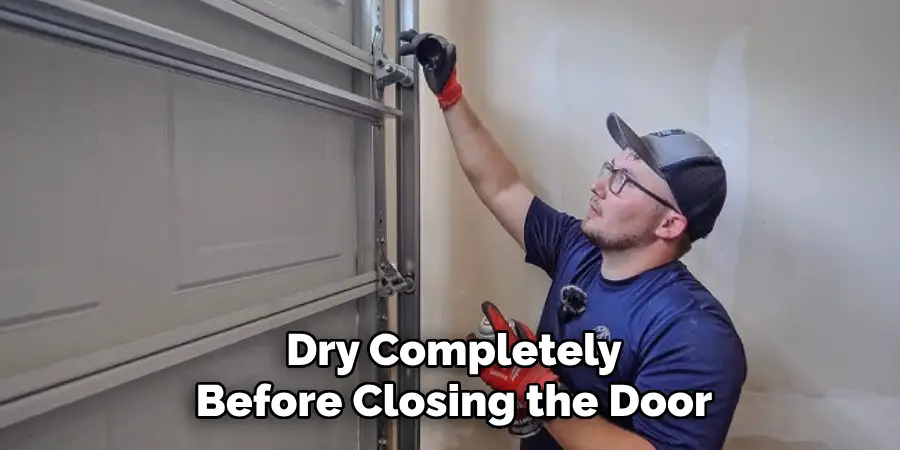
Optional: If there are areas with stubborn sticky residues, apply a small amount of rubbing alcohol on a cloth and gently wipe the affected sections. This step ensures a clean, residue-free surface for optimal performance.
Regular upkeep like this prevents sticking issues and prolongs the lifespan of both the seal and garage door components.
Applying Lubricants to Prevent Sticking
Regular lubrication is essential to maintain the flexibility and effectiveness of your garage door seal, ensuring smooth operation and preventing sticking. Here’s how to correctly apply lubricants to your seal and surrounding components.
Recommended Products
Use silicone-based spray lubricants specifically designed for rubber or vinyl for optimal results. These non-corrosive products will not degrade the material over time, offering reliable protection and performance.
How to Apply
- Begin by ensuring the seal and its surrounding areas are clean and dry.
- Lightly spray the silicone-based lubricant along the entire length of the bottom rubber seal. Avoid applying excessive amounts, as overspraying can attract dust and debris.
- If your garage has a threshold seal, apply a light coat of lubricant to this area as well, especially where the seal contacts the ground.
Frequency
Reapply the lubricant every 1–2 months or during seasonal changes when fluctuating temperatures may impact seal performance. Regular maintenance is essential in extreme climates to preserve the seal’s integrity over time.
Avoid Petroleum-Based Products
Avoid using petroleum-based lubricants or oils on the rubber seals, as these substances can accelerate wear and cause the seals to degrade or crack prematurely. Sticking to silicone-based products ensures long-term durability while keeping your garage door functioning efficiently.
By following these steps, you can ensure that your garage door seal remains protected, flexible, and effective, prolonging its lifespan and preventing unnecessary repairs.
Installing a Threshold Seal or Barrier
What is a Threshold Seal?
A threshold seal is a durable rubber strip that adheres to the garage floor, forming a tight barrier between the floor and the garage door. This type of seal works in conjunction with the bottom door seal to minimize contact, providing an extra layer of protection against external elements. It is particularly effective at keeping water, pests, leaves, and debris from entering your garage while also preventing the bottom seal from sticking to the bare floor.
Installation Steps
Installing a threshold seal is a straightforward process that requires minimal tools and effort. Follow these steps to ensure proper installation:

- Clean the Floor – Thoroughly clean the garage floor where the seal will be installed to remove any dirt, grease, or moisture. A clean surface is essential for the adhesive to bond securely.
- Mark the Position – Close the garage door and mark where the seal will sit. Align the threshold so it matches the contour of the door bottom. Measure twice to avoid errors.
- Apply the Adhesive – Most threshold seal kits include a strong adhesive designed to keep the seal in place. Apply the adhesive evenly along the marked area on the garage floor.
- Press the Seal in Place – Firmly press the rubber strip into the adhesive, ensuring it’s aligned properly. Check for any gaps and adjust as needed.
- Allow to Cure for 24 Hours – Once installed, leave the threshold undisturbed for at least 24 hours to allow the adhesive to cure and form a strong bond fully.
Benefits
Installing a threshold seal offers numerous advantages. It helps create a waterproof barrier, effectively preventing rainwater and snowmelt from seeping into your garage. Additionally, it keeps pests and dirt out, maintaining a cleaner and more secure garage environment. Reducing direct contact between the garage door and the floor also extends the life of the bottom seal and reduces wear and tear. This cost-effective solution ensures a more efficient, durable, and protected garage setup.
Adjusting the Garage Door Seal
Properly maintaining and adjusting your garage door seal ensures optimal performance and protection. Start by checking the seal’s condition regularly. Look for signs of wear such as tears, cracks, or excessive compression, as these indicate the need for adjustments or replacement. A damaged seal cannot provide an effective barrier against environmental elements or pests.
If minor adjustments are required, you can reposition the seal. Begin by loosening the mounting screws on the retainer. Gently adjust the seal to create a better fit with the floor, ensuring a snug barrier while avoiding excessive surface contact that could accelerate wear. For seals that are old, brittle, or overly flattened, it is best to replace them entirely.
When replacing the seal, it is important to choose the right type for your garage’s conditions. Flexible rubber seals are an excellent choice, especially in areas with cold climates, as they remain pliable and effective despite temperature fluctuations. This ensures a tight seal and long-lasting performance. By taking these steps, you can maintain an energy-efficient and secure garage environment, prolonging the seal’s life and enhancing overall durability.
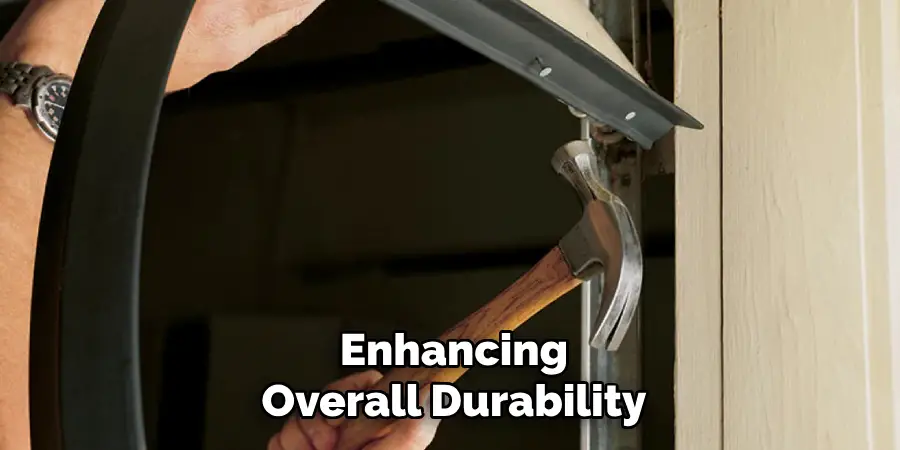
Preventive Tips for Long-Term Maintenance
Adopting a consistent maintenance routine is key to ensuring the durability and effectiveness of your garage door seal. Here are some practical tips that will help maintain the seal for the long term:
Routine Inspections
It’s essential to check the seal and its contact with the garage floor at least once a month. Look for signs of wear, cracking, or gaps where air, water, or pests could seep through. Addressing minor issues early can prevent costly repairs down the line.
Seasonal Lubrication
Extreme temperatures can compromise the flexibility of your seal. Applying a silicone-based spray lubricant to the seal before winter and summer changes can prevent seasonal sticking and maintain its pliability, regardless of weather conditions.
Proper Ventilation
Keeping your garage well-ventilated reduces excessive moisture and condensation that could degrade the seal over time. Install vents or use dehumidifiers to maintain a balanced environment, especially in humid climates.
Consider Floor Coating
If you’re applying a floor coating, avoid options that are tacky or reactive to rubber materials. These types of coatings can cause your seal to stick, leading to premature wear or tearing.
By following these preventive measures, you can extend the life of your garage door seal and ensure it continues to perform effectively for years to come.
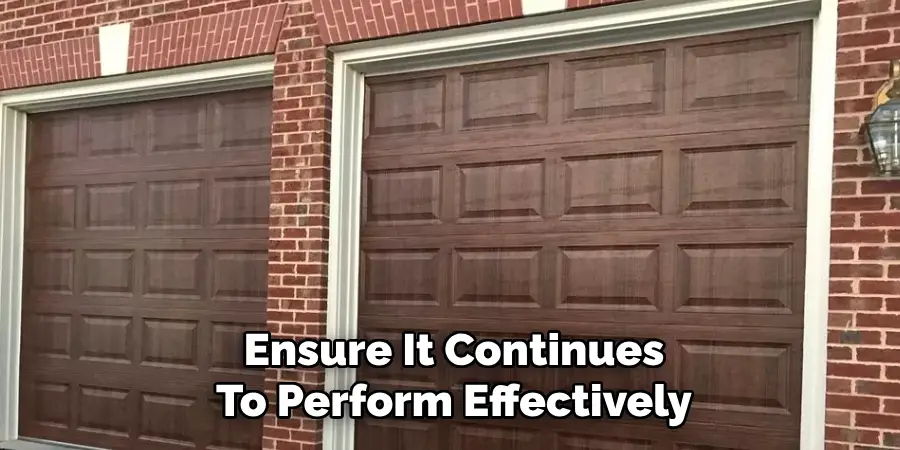
Conclusion
Knowing how to keep garage door seal from sticking is essential for maintaining the performance and lifespan of your garage door. Regular cleaning and lubrication help prevent adhesive buildup, while installing a threshold can create a better barrier against moisture. Choosing the right materials and products ensures long-lasting performance and minimizes the risk of damage to your seal. Consistent maintenance is the key to keeping your garage door functioning smoothly throughout the year. By taking these simple yet effective steps, you can avoid common issues and enjoy a well-maintained garage door for years to come.
I am Rick. I grew up helping my dad with his handyman service. I learned a lot from him about how to fix things, and also about how to work hard and take care of business. These days, I’m still into fixing things- only now, I’m doing it for a living.
I’m always looking for new ways to help people grow and develop. That’s why I have created this blog to share all my experience and knowledge so
that I can help people who are interested in DIY repair.

